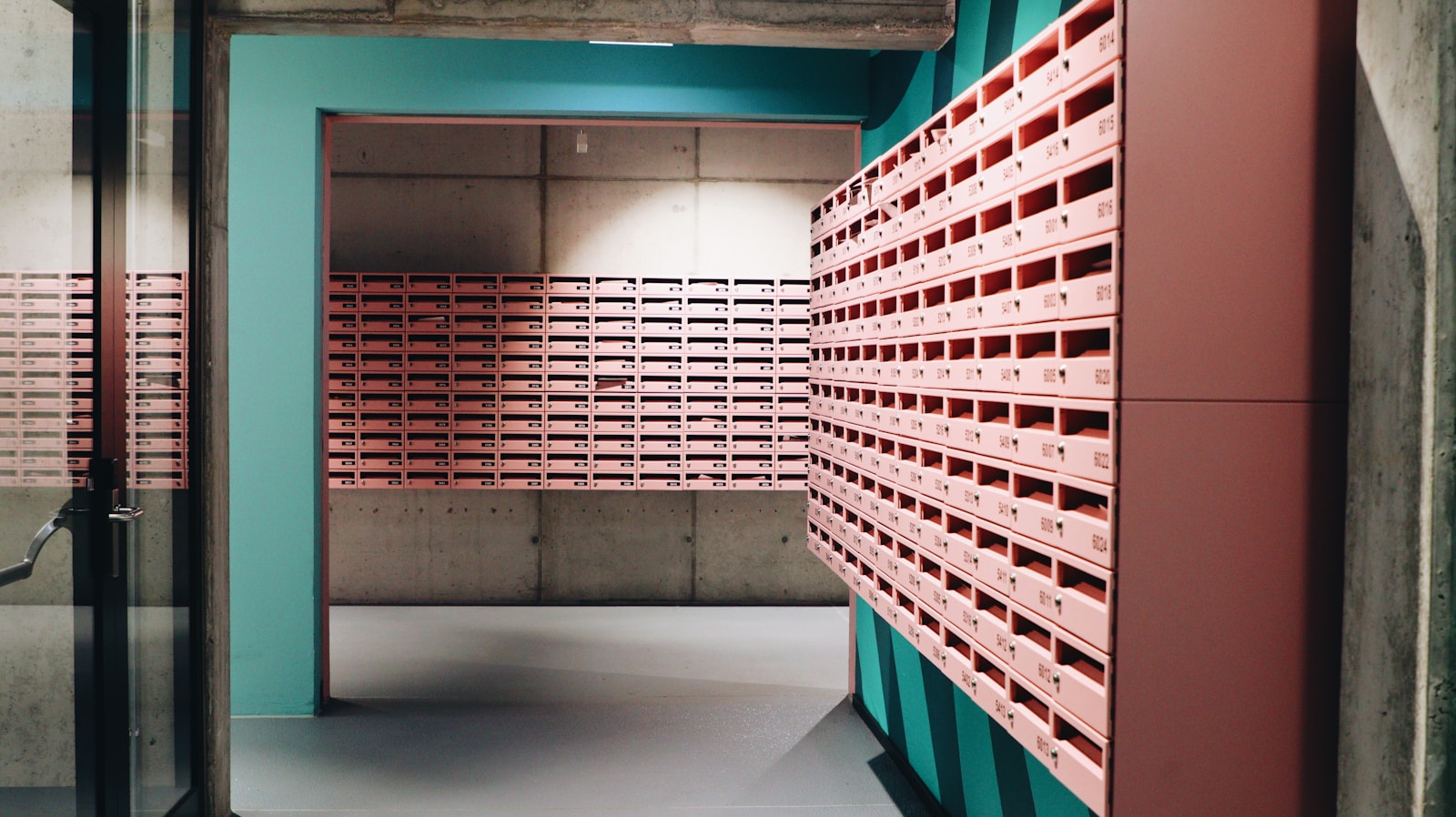If you have an unused room, garage, or warehouse, turning it into a source of steady revenue is simpler than you might think. Many people look for affordable spots to store belongings, tools, or equipment, making these vacant areas highly attractive for short- or long-term leasing.
Sharing portions of your property can generate consistent cash flow with minimal effort. For example, renting out a garage to someone needing vehicle storage or a warehouse corner to a small business requiring extra capacity offers reliable returns. Setting clear terms and ensuring the space’s accessibility are key steps to secure trustworthy tenants.
The demand for alternative storage solutions grows as urban living spaces shrink and businesses seek flexible arrangements. By offering well-maintained and secure places, owners tap into an expanding market that values convenience and affordability over traditional facilities. This approach transforms idle square footage into productive assets generating ongoing profit.
Maximizing Earnings Through Asset Sharing and Storage Solutions
Utilizing available premises for leasing can serve as a reliable method to generate consistent side earnings. By offering unused rooms or sections of warehouses for temporary placement, individuals and businesses can effectively monetize otherwise idle areas. This approach is particularly viable in urban environments where demand for storage locations exceeds supply, creating favorable conditions for lessors.
One practical example involves homeowners renting out spare garages or basements to small enterprises requiring secure holding spots for inventory. Similarly, commercial property owners often subdivide larger facilities into smaller units tailored to different client needs, increasing overall profitability through diversified lease agreements.
Technical Aspects of Asset Leasing Platforms
Modern blockchain-based platforms facilitate transparent transactions between space providers and renters by leveraging smart contracts. These self-executing agreements reduce administrative overhead and ensure timely payments while maintaining immutable records of usage terms. For instance, protocols like Filecoin incentivize participants to share excess capacity in decentralized networks, rewarding contributors with tokens based on storage availability and reliability metrics.
These systems employ cryptographic proofs such as Proof-of-Replication (PoRep) and Proof-of-Spacetime (PoSt) to verify that data is securely stored over agreed periods without tampering or loss. Consequently, users benefit from enhanced trustworthiness while operators gain predictable returns proportional to their commitment.
- Proof-of-Replication: Confirms unique data copies reside on specific hardware.
- Proof-of-Spacetime: Demonstrates ongoing data retention throughout the contract duration.
The convergence of physical asset leasing with decentralized technologies opens avenues for monetizing underutilized premises beyond traditional rental models.
When considering entry into this domain, it is vital to assess factors including location accessibility, security features, and adaptability of the designated area. Properties close to logistics hubs or major transportation routes typically attract higher demand due to ease of dispatch and receipt operations.
An informed evaluation combining these elements enhances decision-making accuracy when preparing facilities for shared utilization.
A significant advantage lies in integrating digital verification tools that automate occupancy tracking and billing processes. Examples include IoT sensors detecting item deposits or removals combined with blockchain timestamping to create tamper-proof logs. Such integrations facilitate streamlined management suitable even for operators lacking extensive technical expertise while fostering transparency among participants.
This blend of conventional leasing methods with cutting-edge technology invites diverse stakeholders–from individual entrepreneurs renting small compartments to corporations offering warehouse sections–to participate confidently in generating supplemental proceeds through asset sharing initiatives.
Choosing Profitable Storage Spaces
Maximizing earnings from unused property requires careful selection of the right area for leasing. Prioritize locations with high demand, such as urban neighborhoods where residential parking is scarce or commercial zones lacking sufficient warehousing. For example, converting an underutilized garage into a secure spot for vehicle or equipment holding can generate steady returns without significant upfront investment.
When considering larger properties, warehouses offer substantial potential due to their capacity and versatility. Industrial districts often experience consistent interest from small businesses needing short-term space for inventory or equipment. Assess factors like accessibility for transport vehicles, structural condition, and security features to ensure the area attracts reliable tenants and maintains value over time.
Key Factors in Selecting Leasing Areas
The profitability of leasing rooms largely depends on location convenience and physical characteristics. Proximity to major highways or public transit hubs increases appeal, especially for logistics companies seeking flexible distribution points. Additionally, well-lit and climate-controlled environments expand usability across various industries, including food storage or sensitive electronics.
- Accessibility: Easy ingress and egress reduce operational difficulties for clients.
- Security: Installation of surveillance systems deters theft and vandalism.
- Size Flexibility: Modular units or subdivided sections cater to diverse tenant needs.
A practical case study involves a shared facility near Moscow that segmented a large hall into smaller units rented by startups on a weekly basis. This model increased occupancy rates by 40% compared to single-tenant agreements, demonstrating the advantage of flexible configurations in boosting profitability.
Utilizing digital platforms for managing bookings and payments streamlines the process and improves customer satisfaction. Blockchain-based contracts can add transparency and reduce disputes by automating terms enforcement. For instance, smart contracts enable automatic fee collection upon agreement milestones without manual intervention, increasing efficiency in revenue collection.
Selecting the appropriate unit size based on target clientele enhances utilization rates. Smaller rooms suit individuals or hobbyists needing minimal area, while expansive sections attract enterprises requiring substantial floor footprint. Offering tiered pricing aligned with room dimensions allows owners to optimize returns while accommodating varied budget levels.
Setting Competitive Rental Prices
To establish competitive fees for leasing extra room or garage areas, begin by analyzing local demand and supply metrics. Conducting a market survey of similar offerings within the vicinity provides a baseline for pricing benchmarks. For example, in urban environments where private vehicle storage is scarce, renting out a garage can command premiums up to 30% above average rates for general-purpose compartments. Conversely, locations with abundant sharing options require more moderate charges to attract tenants.
Utilizing data from peer-to-peer sharing platforms reveals patterns in user preferences and price sensitivity. Listings that feature secure access, climate control, or proximity to transit hubs often justify higher tariffs due to added convenience and reduced risk. Incorporating these variables into pricing algorithms helps optimize earnings while maintaining competitiveness against alternative solutions such as commercial warehouses or personal basements.
Technical Approaches to Price Optimization
Dynamic pricing models leverage real-time analytics from occupancy rates and seasonal trends to adjust leasing costs effectively. For instance, during peak periods–like holiday seasons when additional storage needs surge–rates for vacant rooms or garages can be increased by 15-25%. Implementing automated systems linked with blockchain technology ensures transparent fee structures and instant payment settlements, enhancing trust among users.
Case studies from decentralized platforms demonstrate that segmented pricing based on spatial dimensions and accessibility levels yields better monetization outcomes than flat-rate schemes. Offering tiered packages–for example: small locker units versus full-room accommodations–allows owners to cater to diverse client requirements while maximizing utilization percentages. This granular approach also facilitates integration with smart contracts that enforce agreed terms without manual intervention.
Marketing Storage to Local Renters
To attract local tenants for available warehouses, garages, or spare rooms, it is essential to highlight the practical benefits of leasing underutilized premises. Emphasizing affordability and convenience can significantly increase interest from individuals or small businesses needing additional capacity. For instance, local entrepreneurs often seek accessible garages or smaller units close to their operational hubs, making proximity a key selling point.
Another effective approach involves segmenting potential lessees by use case–whether for personal belongings, seasonal equipment, or commercial inventory. This differentiation allows targeted messaging that addresses specific needs. Case studies show that marketing tailored to hobbyists requiring garage space for tool storage yields higher engagement than generic ads promoting large warehouse areas alone.
Key Strategies for Effective Promotion
Leasing out unused rooms or compartments demands clear communication regarding security features and accessibility schedules. Data from property management platforms indicate that locations offering 24/7 entry combined with monitored surveillance tend to command better occupancy rates. Including detailed descriptions of these attributes in listings reduces uncertainty and encourages quicker decision-making among prospective renters.
Utilizing digital channels optimized for local reach also proves advantageous. Geo-targeted ads on social media platforms and community forums enable precise delivery of offers to individuals actively searching nearby storage solutions. This method cuts down on wasted impressions and maximizes contact with genuinely interested parties.
- Highlight physical conditions: Cleanliness, climate control, and pest prevention foster trust.
- Offer flexible terms: Short- or long-term agreements accommodate varying renter requirements.
- Provide transparent pricing: Itemize fees to avoid misunderstandings.
A practical example comes from a suburban property owner who converted a seldom-used garage into rentable compartments marketed via neighborhood apps. By showcasing high-resolution photos and specifying dimensions clearly, they attracted freelance contractors needing secure equipment housing, resulting in consistent monthly earnings without significant overheads.
Finally, engaging directly with community groups such as local business associations or hobby clubs can open additional pathways for utilization. Presenting real-life testimonials demonstrating how others have benefited from renting out extra premises encourages word-of-mouth referrals–a critical factor backed by surveys showing up to 40% of renters find spaces through personal recommendations rather than broad advertising campaigns.
Managing Contracts and Payments in Shared Storage Solutions
To ensure smooth operation of agreements and financial transactions for shared storage locations–be it a garage, an attic room, or a compact locker–it is recommended to implement smart contracts on blockchain platforms. These self-executing contracts automatically enforce terms such as duration, usage limits, and payment schedules without manual intervention. This approach minimizes disputes and delays by transparently recording each action on an immutable ledger accessible to all parties.
Integrating cryptocurrency payment systems into these agreements provides immediate settlement capabilities and reduces reliance on traditional banking infrastructure. For example, tenants can deposit funds into escrow wallets controlled by the contract until the predefined conditions are met. This mechanism not only secures the funds but also offers flexibility in managing partial payments or penalties for late clearance.
Technical Considerations for Contract Deployment
When designing lease agreements for storing belongings in shared environments like converted garages or spare rooms, defining clear parameters within the code is critical. Key variables include access times, maximum volume allowance, and pricing tiers based on location or amenities (e.g., climate control). Using decentralized oracle services allows integration of real-world data such as temperature readings or occupancy sensors to trigger contract clauses dynamically.
- Example: A user rents a parking spot behind a commercial building; if unauthorized vehicles occupy it beyond agreed hours detected via IoT devices, the smart contract can impose fines automatically.
- Case Study: A blockchain-based platform enabling peer-to-peer sharing of unused cellar areas leverages time-stamped contracts that release payments upon verified check-ins through mobile app confirmations.
For monetary transactions involving digital assets, leveraging stablecoins pegged to fiat currencies helps mitigate volatility risks common to cryptocurrencies. This stability fosters trust between lessors and renters who may otherwise hesitate due to fluctuating token values affecting their earnings or expenses.
The combination of transparent contractual frameworks with cryptocurrency-based settlements promotes confidence among users seeking extra revenue streams by monetizing underutilized rooms or garages. Educating participants about wallet security practices and transaction fee structures enhances adoption rates while preventing common pitfalls encountered during initial deployments. Step-by-step tutorials guiding new users through contract interaction interfaces further reduce barriers to entry.
Maintaining Security and Access in Asset Storage Systems
Ensuring robust protection alongside seamless entry control is fundamental when managing garages, rooms, or warehouses utilized for asset keeping. Implementing multi-factor authentication combined with hardware-based encryption protocols can effectively prevent unauthorized access while maintaining user convenience. For instance, integrating biometric scanners at warehouse entrances paired with blockchain-verified permission ledgers creates a tamper-resistant environment that balances security with usability.
Decentralized sharing models benefit significantly from smart contract automation to regulate agreements and payments without exposing sensitive information. By leveraging zero-knowledge proofs, tenants can prove rightful access without revealing private credentials, fostering trust among participants who share physical enclosures or digital vaults. This approach unlocks new streams of profit by enabling fractional usage of underutilized premises such as private garages or spare rooms within residential complexes.
Key Technical Insights and Future Directions
- Granular Access Management: Employ role-based permissions controlled via decentralized identity solutions to ensure only authorized parties enter designated zones inside storage facilities.
- Automated Audit Trails: Utilize immutable ledgers to record every access event, creating transparent histories that assist dispute resolution and enhance accountability.
- Dynamic Space Allocation: Smart contracts can dynamically assign subspaces within larger warehouses based on real-time demand signals, maximizing utilization efficiency while preserving individual privacy.
- Integration with IoT Sensors: Embedding environmental sensors allows continuous monitoring of conditions inside rented compartments, alerting stakeholders to anomalies that could impact stored goods’ integrity.
The convergence of these technologies presents an evolving paradigm where individuals can monetize idle property sections – be it a garage corner or a spare room – by securely sharing them through cryptographically enforced frameworks. This not only diversifies revenue sources but also encourages sustainable use of existing infrastructures without compromising safety.
Looking forward, advances in interoperable identity standards and confidential computing will further empower users to tailor access parameters granularly while maintaining privacy across distributed ecosystems. Such developments promise more flexible yet secure platforms for asset preservation in shared environments, ultimately transforming how we think about physical space monetization beyond traditional leasing models.





